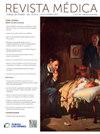非结节下关节病复查:以案例为目的
IF 0.2
Q4 MEDICINE, GENERAL & INTERNAL
引用次数: 0
摘要
距下关节融合术是一种旨在融合距下关节的外科手术。该手术最常见的并发症之一是骨不愈合。本文旨在分析距下关节融合术中骨不连的一般研究和处理,以及骨不连的具体方法。鉴于这是一种常见的并发症,加强对这一主题的了解至关重要。42岁健康男性患者,创伤后左踝关节骨性关节炎,最初于2022年接受胫距关节融合术治疗,由于预后不佳,随后进行了翻修,表现为距下关节骨性关节炎,需要进行距下关节融合术治疗。后者发展为症状性不愈合,并决定在2024年7月进行距下关节融合术翻修。结果患者术后临床进展良好,植骨元件排列和位置良好,无感染迹象。在最后一次检查时(术后一个月),开始使用矫形靴进行保护加载,显示恢复良好。结论关节融合术不愈合,特别是距下关节融合术,是创伤学中的一个重大挑战,其并发症发生率很高。对骨不连的评估应包括全面的临床检查、实验室检查和影像学检查。识别全身和局部的危险因素,以及适当的手术计划,对于预防并发症至关重要。治疗策略应解决根本原因;外科手术的选择和他们的成功应该有一个多维的方法,解决技术和生物方面的程序。最后,实施结构良好的诊断和治疗算法对于改善功能结果和确保成功的骨融合至关重要。本文章由计算机程序翻译,如有差异,请以英文原文为准。
Revisión de artrodesis subtalar por no unión: a propósito de un caso
Introduction
Subtalar arthrodesis is a surgical procedure aimed at fusing the subtalar joint. One of the most common complications of this procedure is non-union. This article aims to analyze the study and management of non-union in general, as well as its specific approach in the context of subtalar arthrodesis. Given that this is a common complication, it is crucial to enhance knowledge on this topic.
Case Report
42-year-old healthy male patient with a background of post-traumatic osteoarthritis of the left ankle, initially treated with tibiotalar arthrodesis in 2022 with subsequent revisions due to poor outcomes, presenting osteoarthritis of the subtalar joint that required management with a subtalar arthrodesis. The latter evolved with symptomatic non-union and it was decided to perform a revision subtalar arthrodesis in July 2024.
Result
The patient showed a favourable postoperative clinical evolution, with adequate alignment and position of the osteosynthesis elements, with no signs of infection. At the last check-up (one month postoperatively), protected loading with an orthopaedic boot was started, showing a good recovery.
Conclusions
Non-unions in joint fusions, particularly in subtalar arthrodesis, represent a significant challenge in traumatology, with high complication rates. Evaluation of non-unions should include a thorough clinical examination, laboratory testing and imaging techniques. Identification of risk factors, both systemic and local, along with proper surgical planning, are essential in preventing complications. Treatment strategies should address the underlying causes; surgical options and their success should have a multidimensional approach that addresses both technical and biological aspects of the procedure. Finally, the implementation of well-structured diagnostic and therapeutic algorithms is crucial to improve functional outcomes and ensure successful bone fusion.
求助全文
通过发布文献求助,成功后即可免费获取论文全文。
去求助
来源期刊

Revista Medica Clinica Las Condes
MEDICINE, GENERAL & INTERNAL-
CiteScore
0.80
自引率
0.00%
发文量
65
审稿时长
81 days
 求助内容:
求助内容: 应助结果提醒方式:
应助结果提醒方式:


